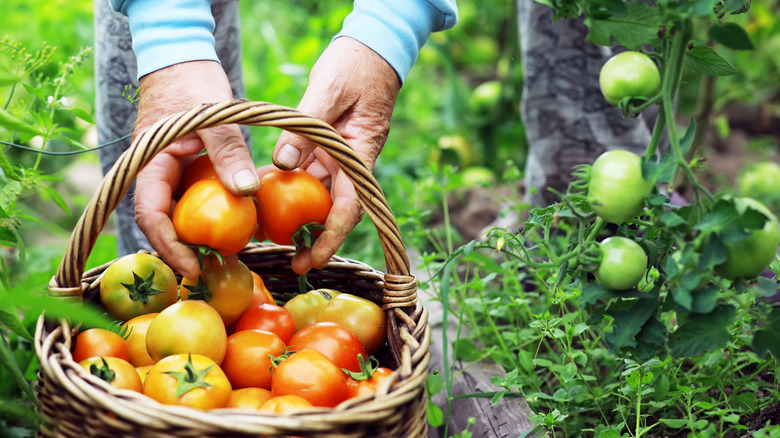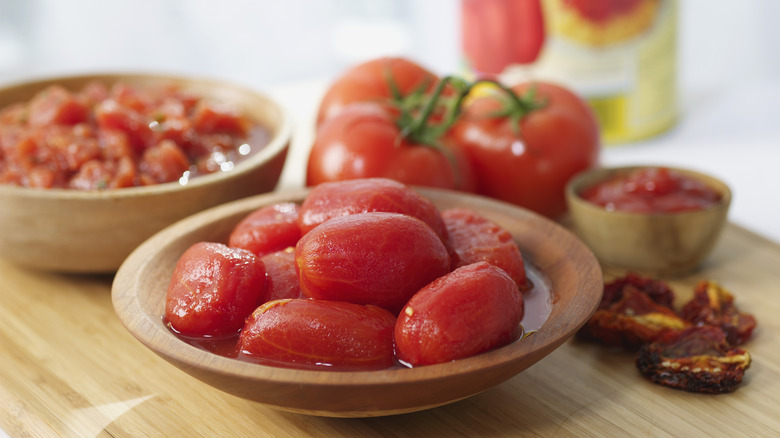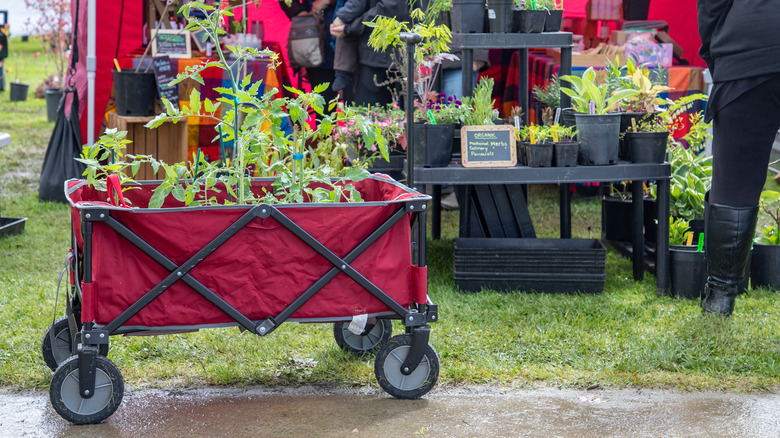Hoping To Plant Tomatoes In Your Garden? Here's How To Determine The Best Variant For You
There comes a time in everyone's life to make a choice. A choice understood by Italian nonni (grandparents) to help bring people together. A choice amongst ten thousand different tomato varieties that will yield the best-tasting tomatoes anybody can get — for nothing tastes quite like the right tomato from the proper garden. If you're choosing to plant tomatoes in your garden, you must first determine the best variant for you. This guide will help you navigate this question by exploring key factors such as your climate, growing season, soil conditions, available space, purpose, and personal preferences.
First, let's start with the most dependent factors: climate and growing season. How long is your growing season? Different tomatoes have different maturity timelines, and you must ensure enough time for the fruit to ripen (yes, tomato is a fruit, get over it). If in a cooler climate, your growing season is likely shorter. Therefore, you might want to look for something in the 45-60 day range, like an Early Girl or Sub Arctic Plenty. If you have a more extended season harvest, you might want to look for tomatoes that mature within 75-100 days. Cannonballs, Bull's Heart, or the Heatmaster tomato are excellent selections. Next, you will need to make sure your soil conditions are right. Tomatoes generally prefer slightly acidic soil with a pH between 6.0-6.8. However, some varieties, like Rutger, can tolerate a broader range of soil conditions.
The rest is up to personal preference
Now it's up to you. Those with large gardens might lean towards indeterminate or "vining" varieties, such as Beefsteak or Brandywine. These varieties continue to grow and produce fruit, necessitating supporting structures, like cages, for optimal growth (until frost comes into the picture). However, something determinant or "bush" types, such as Roma or Patio Choice Yellow, are more suitable for gardeners working with smaller spaces. These compact varieties cease growing once the fruit sets on the top bud, making them an excellent fit.
Your intended use for the tomatoes should also be central to your decision-making process. If you're inclined towards using tomatoes for salads or casual snacking, smaller, bite-sized varieties, such as Cherry or Sun Gold, could be the perfect fit. On the other hand, those planning on canning or creating homemade sauces might want meaty, less watery types, like a San Marzano.
Once you know they can grow, have fun with the selection process! Flavor and aesthetic considerations should never be overlooked in your tomato variety selection. Flavors can range from sweet to tangy or savory, so don't shy away from experimenting with varieties, such as the smoky-sweet Black Krim or the tangy Green Zebra. Moreover, moving beyond the classic red tomato can add a vibrant splash of color to both your garden and your meals. Look for tomato varieties in shades of yellow, like Lemon Boy, or purple exemplified by Cherokee Purple, and even the intriguing striped variety, Striped German.
Final considerations
Here are some things to keep in the front of your mind when finding a suitable variety of tomatoes to plant in your garden. If you have any experience growing them, you probably already have encountered some common issues, particularly disease-related. This happens for several unexpected reasons, like climate, fungus, etc. Regardless of how the disease got there, what's most important is making sure that it won't happen again.
The most efficient way is to find a tomato variety with natural resistance. Several different tomatoes protect themselves against diseases in your soil; how can you tell? Well, you will see a letter at the end of each name, like F for fusarium or N for nematodes, and so on. The same goes for viruses, like the tomato mosaic virus (T) and Alternaria (A). So, once you have decided on a tomato, be aware of what it can fight against! This will surely save you from a garden tragedy. Always do your research and prevention is crucial in gardening.
Regardless of what you have narrowed your tomato shortlist down to, there will always be a tomato offering something slightly different from the next. It may take time to find the perfect one, but the right match can make your tomato garden flourish and perhaps become the best in town. It may be even better than Nonna Maria's down the street, but never tell her that. Now, start planting!


